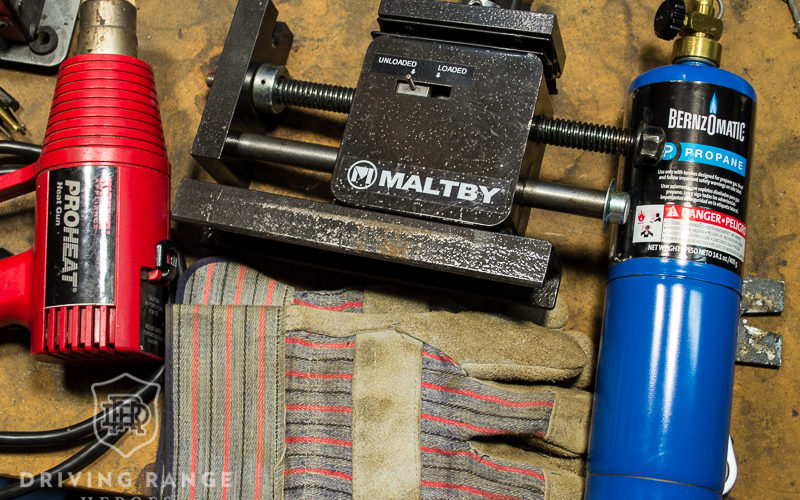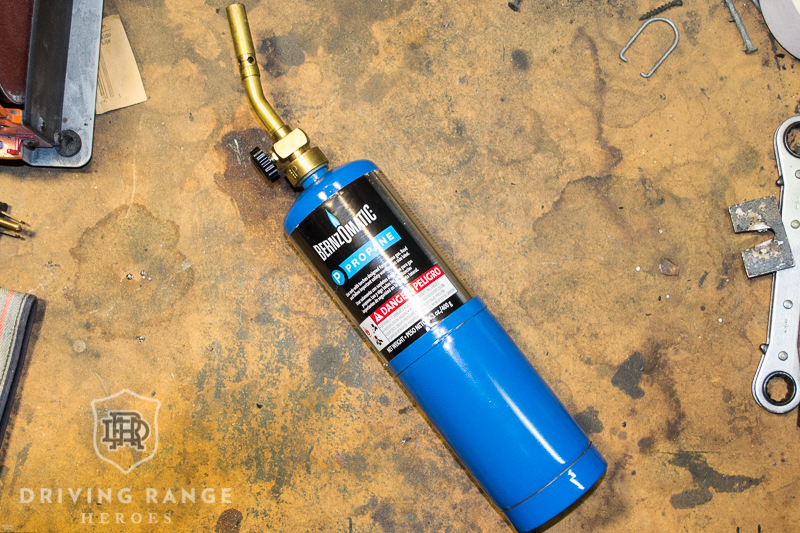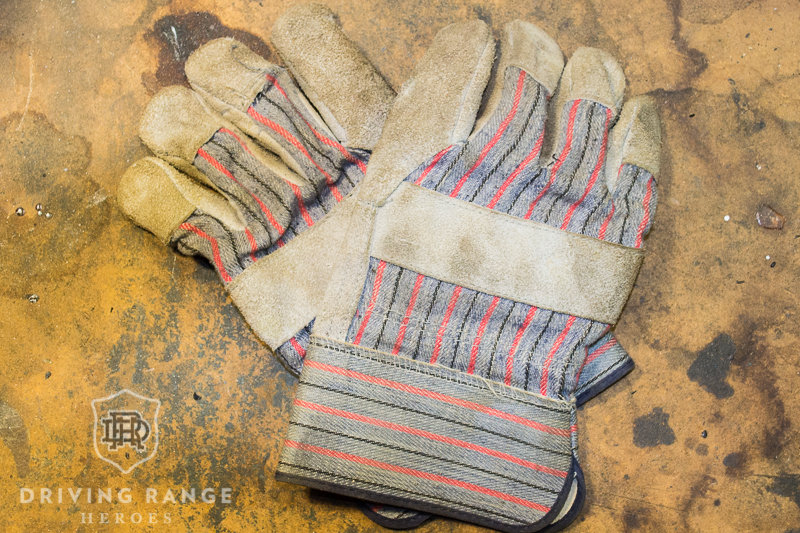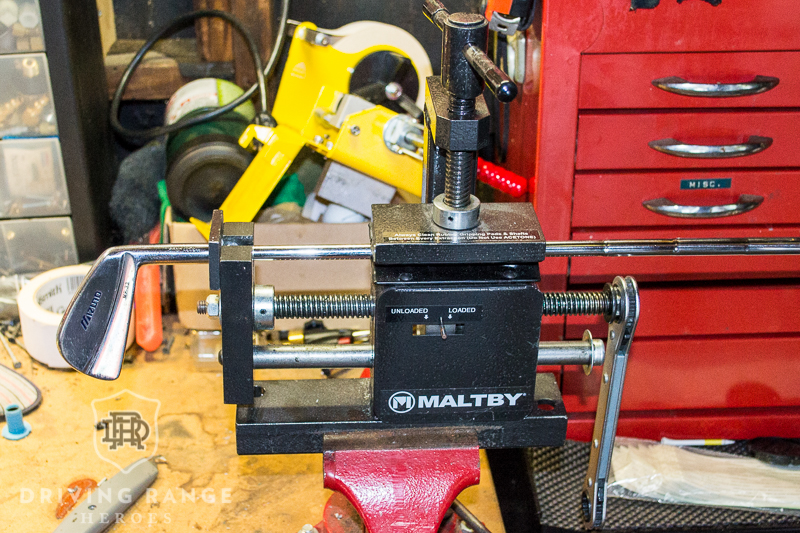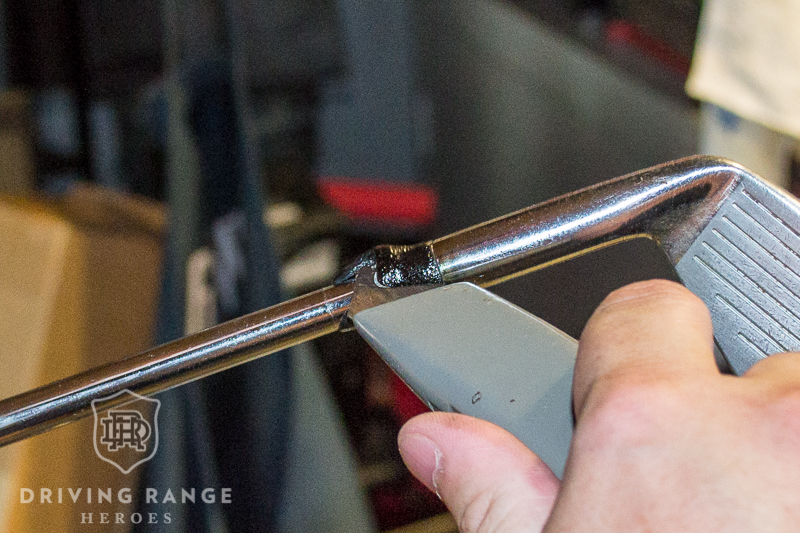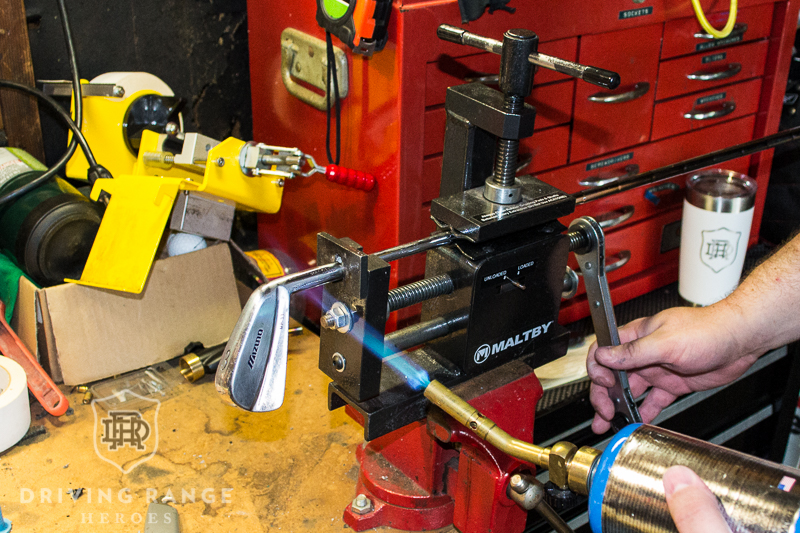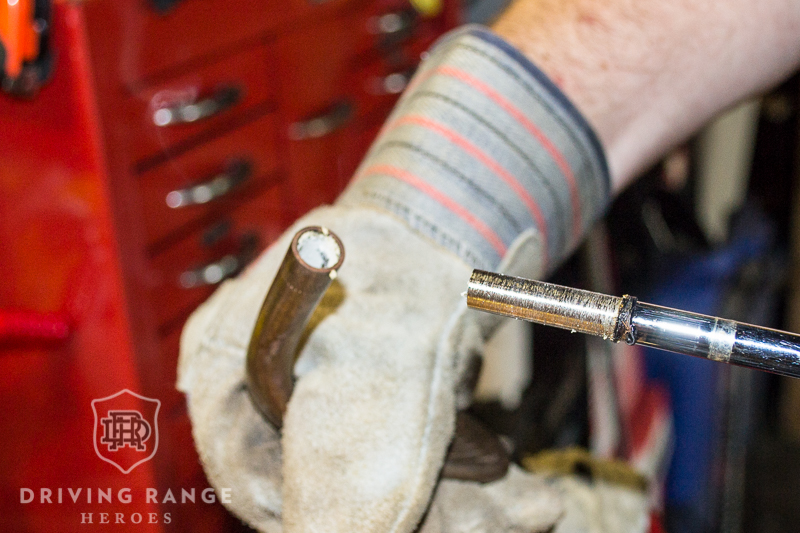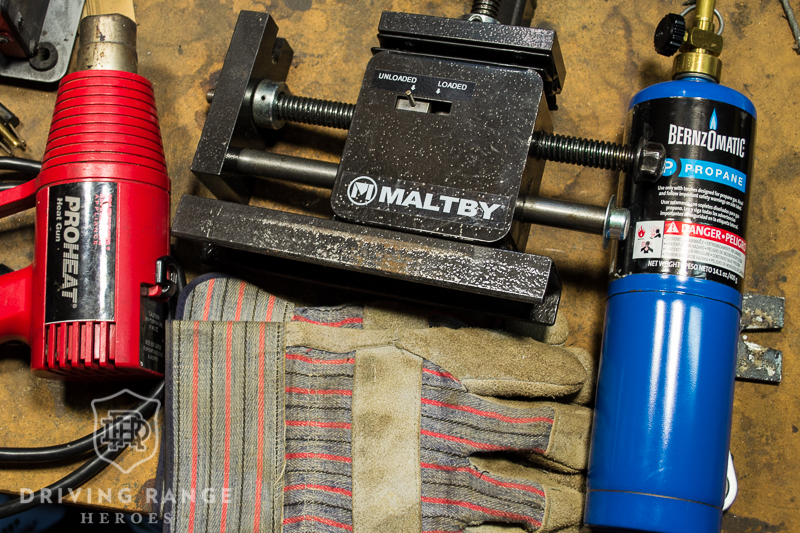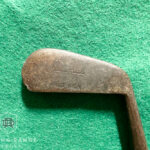Introduction
Like most golf projects, there are a few different ways to pull a golf shaft from a club head. This post will give you some insight around required supplies, technique, and best practices for this task. Hopefully after reading this, you will have a better idea of how to pull a golf shaft safely for your next workshop project. There are additional techniques for prepping and re-shafting clubs, but we’ll cover that in another post.
Supplies Required
In order to pull a golf shaft both safely and successfully, I recommend a few simple items. It’s important to know that if you’re pulling a graphite shaft, there is a big risk of damaging the shaft if you don’t use the proper tools. Below are my recommendations for what you will need to pull a golf shaft:
- Shaft puller: This will allow a constant pressure to be put on the club head as the epoxy is heating. Additionally, this will pull the head in a constant straight direction in order to avoid damaging the shaft. By not pulling the shaft perfectly straight, you will have a high risk for catastrophic failure. The shaft puller removes that risk. There are a lot of options out there, but I advise investing in a good quality shaft puller that has good reviews.
- Hosel protector: Most decent shaft pullers will come with one of these, but if they don’t, get one. This goes between the puller and the hosel so the shaft puller will put the pressure on the protector plate and not the club head directly. Others may think this to be somewhat unnecessary, but I support its use.
- Vise: If you don’t want to permanently mount your shaft puller to a workbench, make sure you get one that’s vise mountable. Obviously you’d then need a vise to put it in. The vise is a clutch tool in at-home clubmaking so it’s worth having one around.
- Heat Source: There are a coupe of at-home hacks for a heat source, but your standard best options are either a heat gun or a propane torch (or both). You will need these to apply constant heat at the hosel to break down the epoxy so the head will separate from the shaft. Most seasoned club builders will use a propane torch in order to minimize amount of time exposed to heat.
- Heavy Duty Work Gloves: Part of using heat to pull clubs apart is a hot club head and/or shaft. I like to have some gloves around to quickly handle any hot components. Note, I said quickly. Quick enough to grab a head or adapter and move it to a safe location. If you hold a scorching hot metal component long enough in those gloves, you’ll feel it.
There are other useful items to assist in this process, but these are the basics and should be good enough to get you started.
How To Pull a Golf Shaft
Making sure you use a safe technique is the most crucial portion of pulling a golf shaft. Failing to do it in a correct fashion could result in that slick $400 aftermarket shaft becoming a $400 piece of garbage. In the interest of making the process easy to follow, we’ll lay it out in bullet point fashion.
- Remove the ferrule. This isn’t necessarily a must, but it makes life cleaner and easier. This can be done by applying heat with your heat gun or torch until the ferrule is soft enough to cut off with a hook blade. BE CAREFUL ON GRAPHITE SHAFTS! You don’t want to dig into the graphite and damage the shaft…especially at the tip.
- Tightly secure shaft in the shaft puller. If pulling a graphite shaft, you have to have a little touch. You need to clamp down tight enough that the shaft doesn’t just slide while the puller is pushing against the hosel. If you clamp down too tight, you could crack the shaft. Unfortunately, you will likely do this to a few shafts at some point.
- Apply pressure to the hosel. This is where you place your hosel protector on the shaft between the head and the puller, then crank the shaft puller until tension is applied. I like to use something that has a tension indicator so you know how much tension is applied and can see if it changes at all. The shaft puller I use applies a constant pressure that will release when the epoxy breaks down and will push the club head off nice and straight.
- Apply heat (pulling the shaft). Now that your shaft is in the puller with tension, all that’s left to do is apply heat at the hosel to break down the epoxy. Like anything using heat, you want to keep the heat constantly moving around the whole area. Failing to do so could cause cosmetic blemishes to the club or shaft, and even cause permanent damage in areas where too much direct heat was applied for too long. After enough heat is applied, the head will become loose and the shaft puller will push it straight off the shaft. DON’T FINISH REMOVING THE HEAD BY HAND. Though the epoxy is loosened, you still want to let the shaft puller push the head all the way off so as not to damage the shaft at the last minute.
“Pro” Tip: Once you get used to this process, I’d suggest a propane torch over heat gun. The torch provides more precise heat application and higher temperatures which means the shaft and club head will experience less time under heat stress and less risk of damage. Your pull will also go quicker. The risk is that if you don’t know what you’re doing with the torch, you may have way too much heat and too concentrated, thus damaging your equipment.
At this point, your club head should be removed. Over multiple projects, you will find that some clubs come apart easier than others. I can only think of one time I was unable to actually pull a shaft using this technique. Depending on the epoxy used, the age, and a variety of other variables, some clubs will require more heat and time under pressure than others. Just be smart and safe with the work to avoid any catastrophes.
Conclusion
Removing a shaft from a club is quite a useful skill and is pretty easy once you know what you’re doing. There are other shortcuts and techniques for pulling steel shafts, but the process from this post will work for everything. In the future, we’ll post some additional tricks for shaft pulling steel shafts if the concepts listed above aren’t an option. Hopefully now you have a good idea on how to properly pull a golf shaft. If you have any questions, or good ideas to share, leave them in the comments below.

